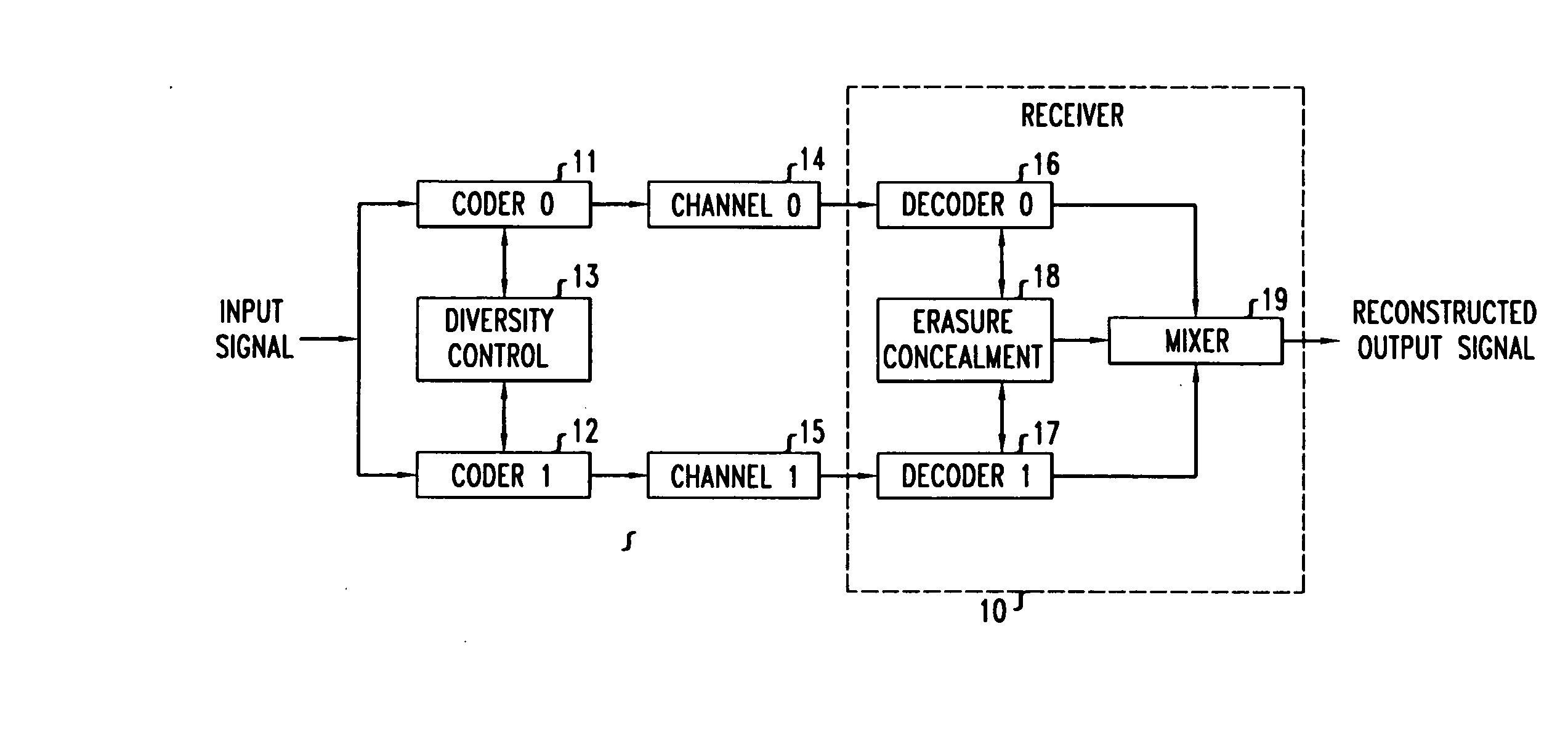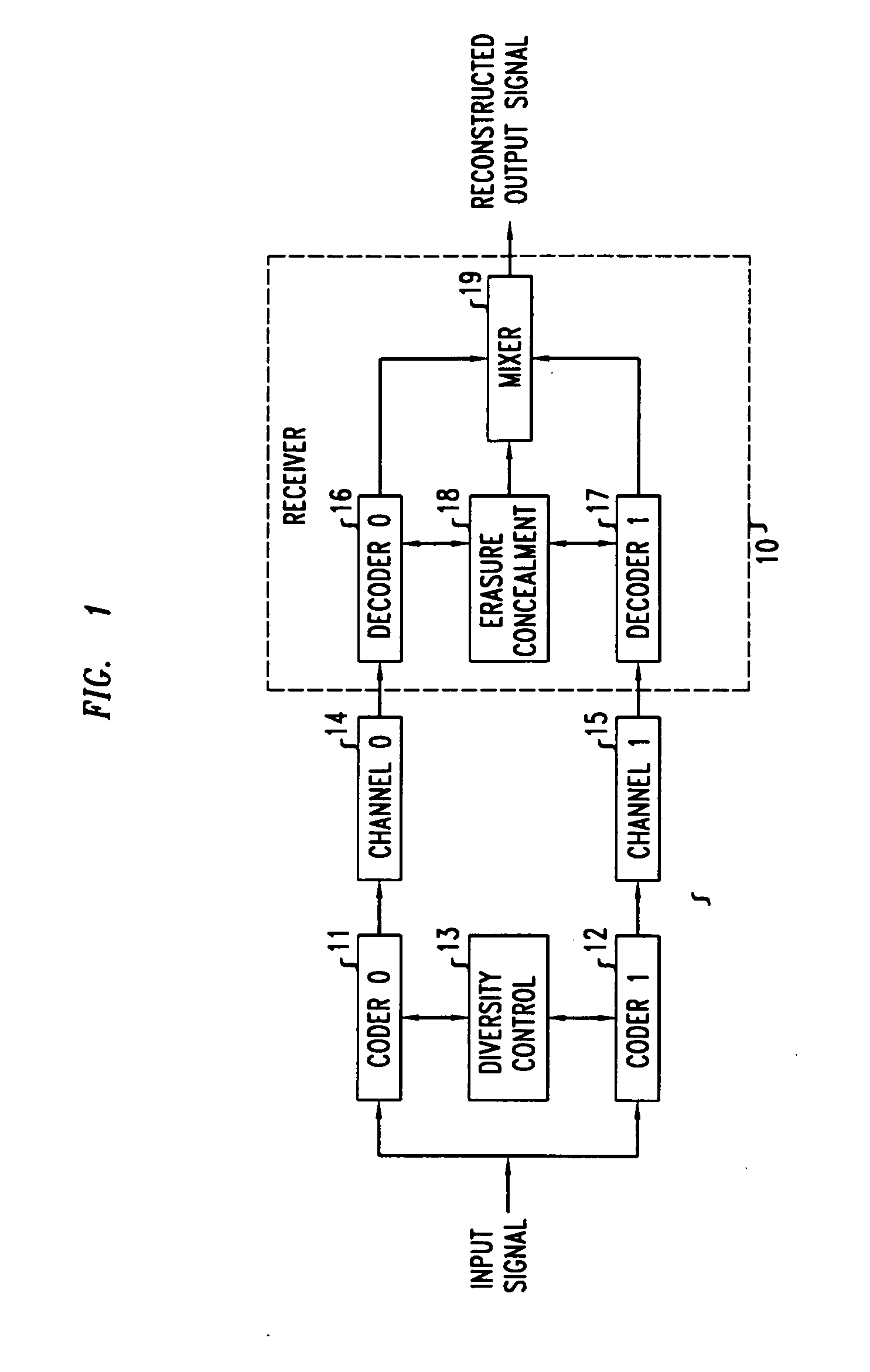Method and apparatus for diversity control in mutiple description voice communication
a diversity control and voice communication technology, applied in the field of multidescriptive source coding for signals, can solve the problems of network environments employing encoders and decoders, information received will still be sufficient to achieve a reduced, but at least minimally acceptable fidelity, and the performance of reconstructed signals drops quickly as the rate of channel erasure increases, so as to achieve advantageously reduce the total error and reduce the quality of the reconstructed signal.
- Summary
- Abstract
- Description
- Claims
- Application Information
AI Technical Summary
Benefits of technology
Problems solved by technology
Method used
Image
Examples
Embodiment Construction
Overview of the Illustrative Embodiments
[0013]FIG. 1 shows an illustrative two-channel multiple description communications system in accordance with the principles of the present invention. The system of FIG. 1 includes coders 11 and 12, diversity control module 13, channels 14 and 15, and receiver 10 which comprises decoders 16 and 17, erasure concealment module 18, and mixer 19.
[0014] In operation, the illustrative system of FIG. 1 provides two multiple description bit streams generated from the single input source (e.g., speech) signal by coder 11 and coder 12, respectively, which bit streams may be transmitted through channel 14 and channel 15, respectively, and may then be decoded by decoder 16 and decoder 17, respectively, to produce two independent decoded bit streams. The two decoded bit streams are then combined by mixer 19 to produce the reconstructed output (e.g., speech) signal. In the event that one of the two bit streams is not available due to frame erasure (i.e., p...
PUM
 Login to View More
Login to View More Abstract
Description
Claims
Application Information
 Login to View More
Login to View More - R&D
- Intellectual Property
- Life Sciences
- Materials
- Tech Scout
- Unparalleled Data Quality
- Higher Quality Content
- 60% Fewer Hallucinations
Browse by: Latest US Patents, China's latest patents, Technical Efficacy Thesaurus, Application Domain, Technology Topic, Popular Technical Reports.
© 2025 PatSnap. All rights reserved.Legal|Privacy policy|Modern Slavery Act Transparency Statement|Sitemap|About US| Contact US: help@patsnap.com


